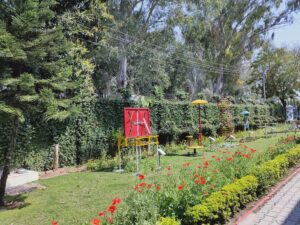SCIENCE PARK




In the realm of educational environments, a school science park stands out as a beacon of interactive learning, blending the natural world with scientific inquiry. It is a dedicated outdoor space that brings to life the principles of physics, biology, and environmental science, offering hands-on exploratory experiences that stimulate curiosity and encourage students to discover the wonders of the scientific universe.
Understanding the School Science Park
A school science park is an open-air laboratory that extends learning beyond the traditional classroom. It is designed with various scientific exhibits and installations that students can engage with, providing practical applications of the concepts they learn in their textbooks. The primary components of a science park often include:
- Interactive Exhibits: These are designed to illustrate scientific principles such as energy conversion, sound waves, optics, and mechanics in a manner that is tangible and engaging.
- Ecological Zones: These areas are dedicated to studying plant life, ecosystems, and biodiversity, allowing students to observe and interact with living organisms and learn about environmental conservation.
- Weather Stations: Some science parks include instruments like anemometers, rain gauges, and weather vanes to teach students about meteorological phenomena.
- Astronomical Features: Sundials, telescopes, and celestial models can be found in science parks, offering students a hands-on approach to learning about astronomy and the cosmos.
The Benefits of a School Science Park
A school science park is an invaluable resource for enriching science education. The benefits are numerous and varied:
- Active Learning: Science parks require students to engage in physical activity as they explore and interact with the exhibits, promoting kinesthetic learning.
- Real-World Application: By observing real-world applications of scientific laws, students can better understand abstract concepts and retain information more effectively.
- Cultivating Curiosity: The informal, open-ended nature of science parks encourages students to ask questions, seek answers, and cultivate a lifelong love of learning.
- Enhanced Engagement: The novelty of outdoor learning captures students’ attention and can increase their motivation and enthusiasm for science.
- Inclusive Education: Science parks can be accessible to all students, including those with disabilities, providing a diverse learning environment that caters to different needs and learning styles.
